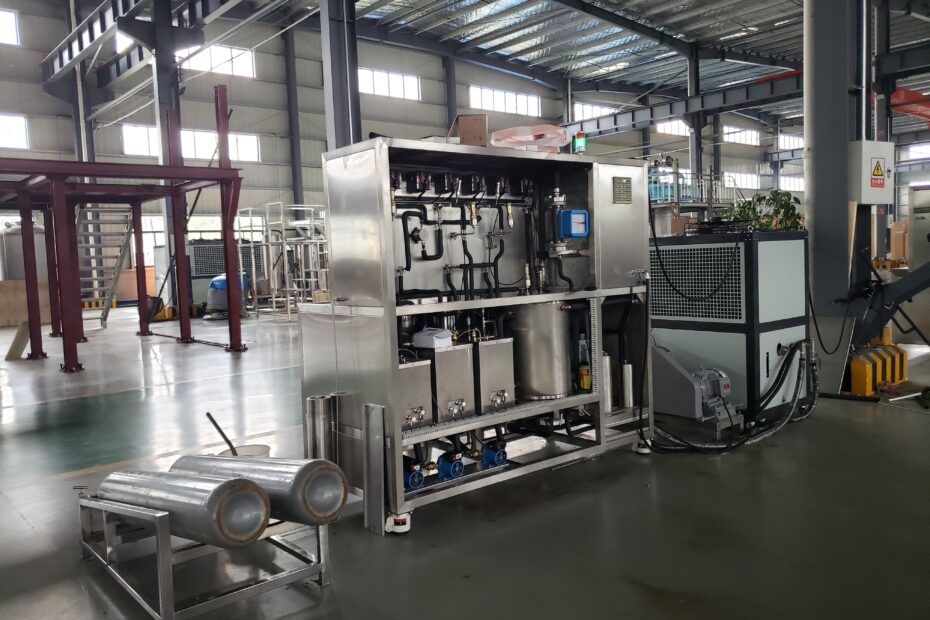Natural pigments are colorants widely used in the food industry, cosmetics industry and pharmaceutical industry. Edible natural pigments have many favorable properties as important food additives:
- Edible natural pigments come from the tissues of animals, plants and microorganisms, so most of them have no side effects and are highly safe;
- Some edible pigments are themselves a nutrient with nutritional effects;
- Edible natural pigments can better imitate the color of natural objects and have a more natural tone.
my country’s edible natural pigment industry has developed rapidly, and there are dozens of products, but almost all companies use traditional processes, and the products they produce are of poor quality, low purity, odor and solvent residues, which seriously affect the promotion and use of edible natural pigments.
Therefore, how to use advanced processes and equipment to improve product quality is an important topic for the future development of edible natural pigments in my country. Supercritical CO₂ fluid extraction process technology is an emerging extraction and separation technology in the food industry.
Compared with the conventional organic reagent method, the products produced by supercritical CO₂ fluid extraction technology have no solvent residue and no pollution, can avoid thermal degradation of the extract at high temperature, protect the activity of physiologically active substances, and can preserve the natural flavor of the extract.
Therefore, supercritical CO₂ fluid extraction technology has been applied to the extraction and refining of natural food pigments such as capsanthin, lycopene, β-carotene and gardenia yellow.
Supercritical CO₂ extraction process of capsanthin and capsaicin
The traditional methods for extracting capsanthin are oil-soluble method and solvent method, but these methods have problems such as complex process, low product purity, odor, and high solvent residue.
At present, the three commonly used methods for direct extraction of capsanthin and capsaicin using supercritical CO₂ fluid at home and abroad are introduced as follows.
Segmented extraction method
Dry the pepper to a moisture content of less than 20%, crush the particle size to 40-60 mesh, then put the pepper powder into the extraction kettle, close the valve of the second-stage separation kettle, open the valve of the first-stage separation kettle, maintain the extraction temperature at 35°C and the extraction pressure at 10MPa, the temperature of the first-stage separation kettle at 60°C and the pressure at 5MPa, after extraction for 3-4 hours, increase the pressure of the extraction kettle to more than 12MPa, adjust the extraction temperature to 45°C, close the valve of the first-stage separation kettle, open the valve of the second-stage separation kettle, the separation conditions are the same as the first-stage separation kettle, dynamic extraction for 3-4 hours, close various valves, reduce pressure, collect products, the first-stage separation kettle is the crude product of capsaicin, and the second-stage separation kettle is the slightly spicy capsanthin.
The principle of separation is that the pressure in the extraction kettle is higher and the CO₂ density is higher, the extracted substance is dissolved in CO₂, and the extracted substance in the separation kettle is separated from CO₂ due to the sudden decrease in pressure and the decrease in solubility. Capsaicin and capsanthin have different solubility in supercritical CO₂ fluid. Capsaicin has a higher solubility and can be dissolved in high-pressure supercritical CO₂ fluid; capsanthin has a lower solubility and can only be dissolved in high-pressure supercritical CO₂ fluid. Therefore, capsaicin is extracted first under low pressure and capsanthin is retained in the extraction kettle. After the capsaicin is extracted, the pressure can be increased to extract the non-spicy capsanthin.
One-time extraction and two-stage separation method
Put the chili powder in the extraction kettle, open the valves of the first and second stage separation kettles, maintain the extraction conditions of 45℃ and 25MPa in the extraction kettle, maintain the separation conditions of 60℃ and 12MPa in the first stage separation kettle, and maintain the separation conditions of 60℃ and 5MPa in the second stage separation kettle. Dynamic extraction for 3~4h, unload the pressure, close the valve, collect the product, the first stage separation kettle contains slightly spicy capsanthin, and the second stage separation kettle contains crude capsaicin.
The principle of extraction separation is that under high pressure, both capsaicin and capsanthin are extracted. The mixture of the two, capsanthin oleoresin, is first precipitated and deposited in the separation kettle due to the pressure drop, density reduction, and solubility reduction of capsanthin in the first-stage separation kettle; while capsaicin is still dissolved in CO₂. In the second-stage separation kettle, the pressure is further reduced, capsaicin precipitates, and the two are separated.
Continuous segmented extraction method
First, extract the capsaicin oleoresin under high pressure, then add a suitable filler and the capsaicin oleoresin mixed filler. The amount of the mixture particles is preferably loose. The mixture is loaded into the extraction kettle. The extraction and separation conditions of the first method are used to obtain capsanthin and capsanthin crude products without spicy taste. If only the capsaicin oleoresin is to be obtained, the extraction should be carried out under high pressure, the second-stage separation kettle should be closed, and the first-stage separation kettle should be maintained at 60℃ and 5MPa. High-quality capsaicin oleoresin can be obtained.
Conclusion
Among the above several supercritical CO₂ extraction methods, the capsanthin obtained by the third method has good quality and no spicy taste; while the capsanthin obtained by the first and second methods has a slightly spicy taste.
